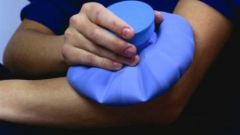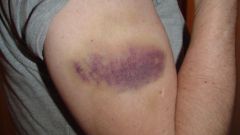Instruction
1
Cause of coccyx injury is a nasty fall on his back or buttocks, and as he is at the spine, even slight trauma can have a negative impact on the whole body.
2
The first sign of coccyx injury is the sharp pain that a few hours later off to a spectacular start, but again increases at the slightest movement. The tailbone can hurt for a very long time, even for several years after the injury, and the person to experience discomfort while trying to run, bend over or sit down. Also characteristic swelling at the site of injury and formation of hematoma (bruise) to the rupture of small vessels.
3
The most effective way of providing first aid is a cold compress to the injury site. It will reduce blood flow to the injured spot to reduce swelling and pain. If the injury occurred in the winter you can use snow or ice wrapped in any cloth (e.g. a handkerchief), and home to ice from the refrigerator. Cold you need to make in the first 2 days after injury and then use dry heat.
4
Also, the patient is recommended to sit less, not to make sudden movements, it is impossible to take a hot bath, sleep better, not on the back, side or stomach, not to put on the coccyx unwanted pressure. If a strong injury, it is recommended to use a special orthopedic pillow or rubber circle. In this case, the coccyx when sitting will not be in contact with the seat surface, thereby avoiding additional burden on it and increased pain.
5
The main goal of treatment of coccyx injury - relieve pain. To do this, apply pain ointment, and in severe pain - injections of anesthetic drugs. Recommended ointment with Arnica, calendula, chamomile, and any warming of the rubbing to improve blood flow to the site of injury. From a traditional medicine widely used to reduce pain found the juice of wormwood, it should be rubbed into the injured area several times a day. Also with this purpose, apply bandages with chopped plantain leaves and onion compresses.
6
Injury of coccyx desirable at the first opportunity to go to the doctor and get an x-ray to rule out possible fracture, even though it is quite rare. Fracture is more common in athletes (e.g., gymnasts) or as a result of injuries received in the accident. If the fracture is still there, then it is treated only by surgery, removing the damaged part, as the coccyx is impossible to splice. This operation is quite painful, and then required a long rehabilitation period.
7
If coccyx injury is not treated, the pain become chronic and damage the spinal cord further can disturb headaches and back problems. It is therefore very important time to begin to heal any injury of the coccyx, in spite of its heaviness and even if it seems frivolous.










